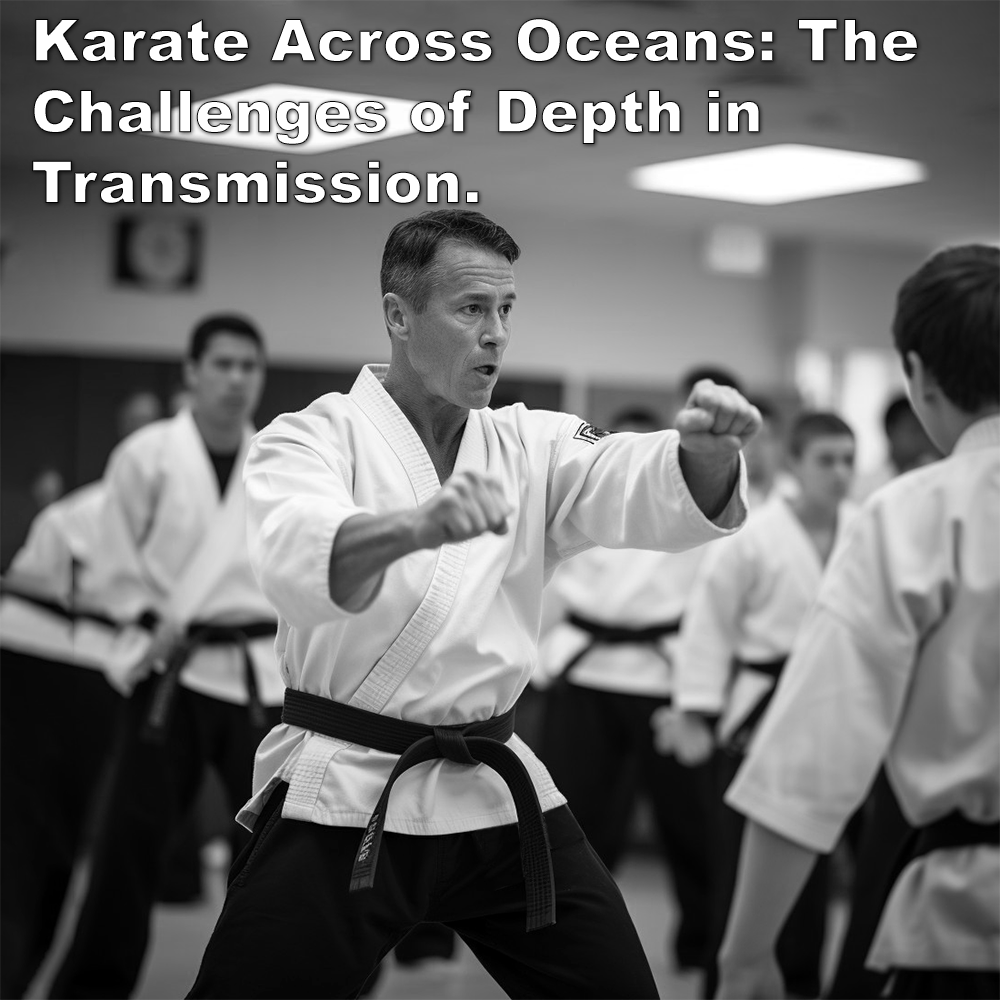
Karate Across Oceans: The Challenges of Depth in Transmission.
Posted by ADAM CARTER on OCT 03, 2024

Karate Across Oceans: The Challenges of Depth in Transmission.
(Approx 2 minute 40 second read)
Karate’s journey from Okinawa to the US was largely shaped by American servicemen stationed in Okinawa and Japan after World War II. Many were eager to learn, but with limited time and significant cultural barriers, one might wonder: Was the depth and nuance of traditional karate truly passed on, or were the teachings simplified to fit the circumstances?
This challenge didn’t seem unique to the U.S.; in countries like the UK, where I’m from, karate also grew rapidly, was the art sometimes similarly stripped of its deeper elements?
Post-WWII, American servicemen stationed in Okinawa and Japan encountered karate and were captivated by its techniques. However, their time in the region was often brief, and karate was difficult to learn deeply in such a short period. Were servicemen only taught the basics, without delving into the deeper layers of application or the principles behind the art?
While many servicemen were passionate about learning karate and played a significant role in bringing the art to the West, the circumstances they faced – such as limited time and language barriers – often prevented them from fully accessing the deeper layers of the art. In no way does this diminish their contribution, but it does raise the question of how much of karate’s richness might have been lost in those early transmissions.
Okinawan masters taught karate with a long-term approach, emphasizing gradual progression and deep understanding. The language barrier posed a significant obstacle, making it difficult for instructors to convey the subtleties of the art. This was a challenge not only in the U.S. but also in countries like the UK, where karate began to spread in the 1960s and 1970s.
For servicemen returning home with enthusiasm but perhaps only surface-level knowledge, did they understand enough to pass the art on fully? When I began training in the UK in 1974, many of the teachers were Japanese and Okinawan. With language often a barrier, were students learning more than just physical techniques – strikes, ‘blocks’, conditioning, and practicing kata by rote – was the deeper meaning lost?
As karate grew in popularity across the world, the focus shifted to belt promotions, tournament success, and sport karate, distancing karate from its roots in self-defense and traditional close-quarter combat. Were quick results and commercialization playing a part in this change?
And today, we might ask: Is this why karate seems to have become more superficial? Is the version of karate many practice today shaped by the limitations of its transmission in those early years? Were the servicemen and early Western practitioners only scratching the surface?
The proliferation of “superficial” karate today may be rooted in this early transmission, with a focus on sport, or just the philosophical side, the character building, of karate. One must consider how much of karate’s richness might have been lost in those early interactions and what implications this has for how we practice and understand the art today.
Modern practitioners have opportunities that earlier generations didn’t, with access to more resources, teachers, and detailed information. But can today’s karateka bridge the gap? Are we now rediscovering karate, traditional principles, and self-defense applications that might have been missed? And will this deeper understanding ensure that the full spirit of karate is finally passed on to future generations, or are they content with what they have?
Written by AC.
![]() Photo Credit: Stockcake
Photo Credit: Stockcake
